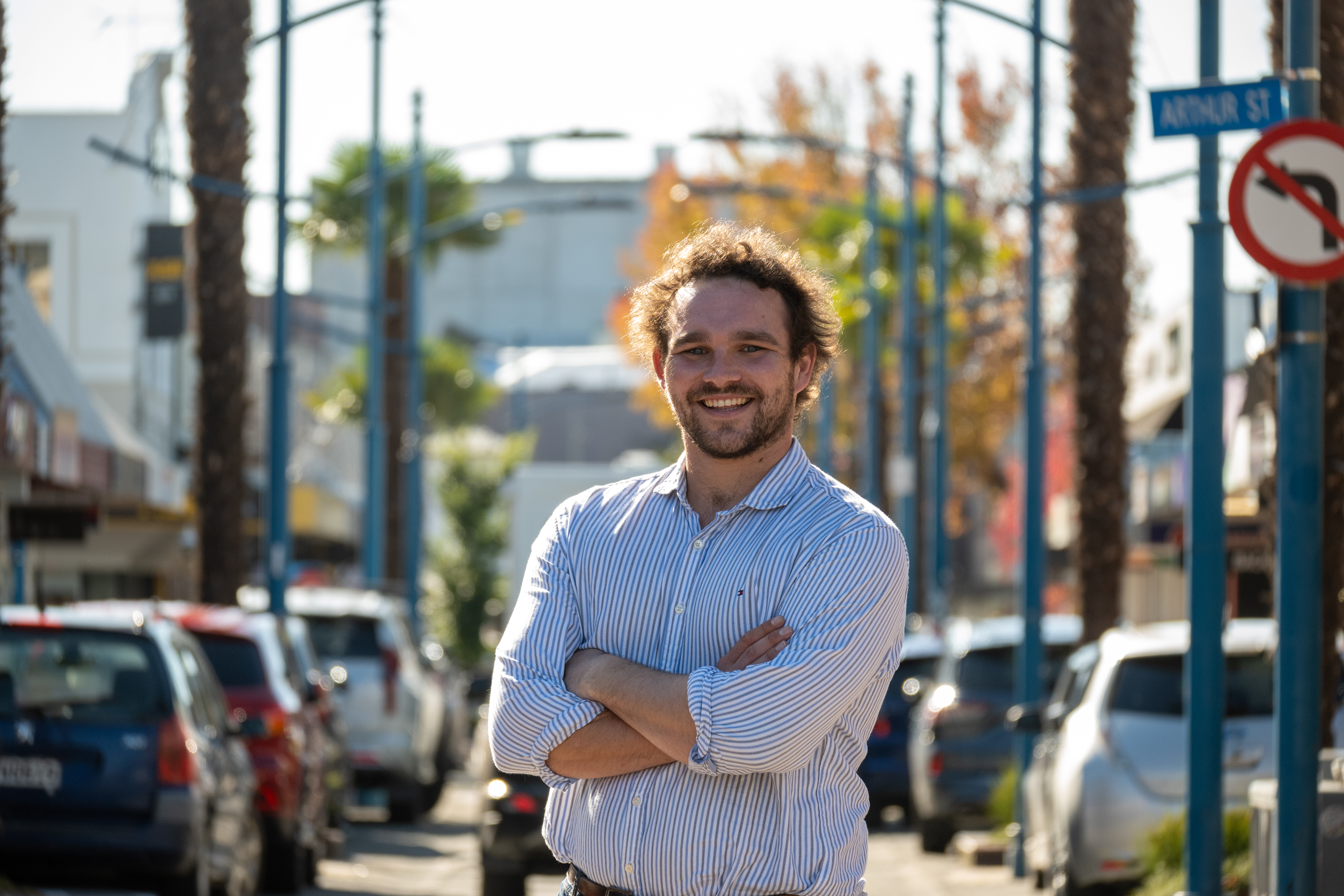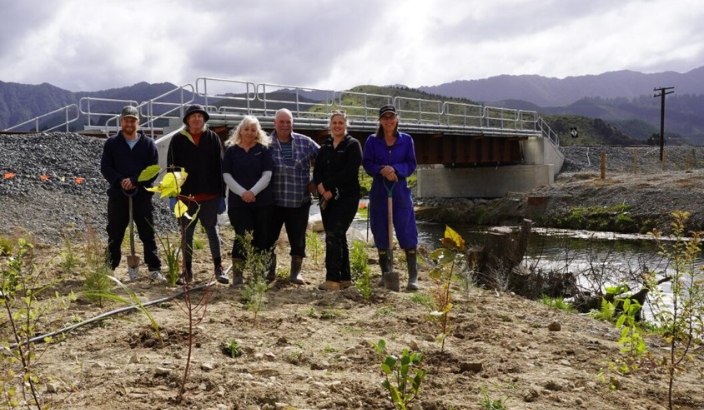Bringing back the Blue


Te Ātiawa’s Josh Huntley and Philip Sim, landowners Kerry and Ivan Fearn, KiwiRail’s Loren Carr and Wild About Natives’ Michaela Owens at the Blue Hole in Koromiko. Photo: William Woodworth.
Teamwork, great timing and a handy 450 tonne crane has kickstarted the return of a significant freshwater spring into its natural state.
An honoured and productive waterway used by local iwi for food, crafts and baptisms, Koromiko’s Blue Hole spring and stream was overtaken by invasive willow trees during its time as a Significant Natural Area.
Fourth generation landowners Ivan and Kerry Fearn, members of iwi Te Ātiawa o Te Waka-a-Māui, along with KiwiRail and HEB Construction, are pleased to be returning locally-supplied natives to the banks.
“It’s been a dream of mine for I’d say 20 years to get this part cleaned up and put back into its natural state”, said Ivan, while Kerry was “so thrilled to start, as this has been a long time coming so very excited that today is happening”.
“It never would have been to this extent and quality without the help of KiwiRail and HEB Construction in removing willows, and now Te Ātiawa for planting,” she added.
The replacement of the Blue Hole’s original bridge and underpass prompted a restoration plan, made stronger after the Whale Trail’s replanting efforts around the spring in 2024.
When the planned bridge upgrade got underway, the final link in the project – the actual removal of the willows – was pitched to the bridge builders.
“When the new Bridge 189 staging and the new underpass, we’ve lovingly named the Cattle Udderpass, was being installed we had to remove some trees anyway,” said KiwiRail Environmental Advisor Loren Carr.
“My project manager and I got in touch with Ivan and Kerry who told us the restoration plan, and we thought “the 450-tonne crane will be here, we may as well use it for some ongoing good and meet our value of environmental care, so we’ve been onboard from the start.” Ivan recalls the Blue Hole was a Significant Natural Area, which without upkeep or landowner say was taken over by the willows.
“I went to Council to get the willows out consistently until about five years ago when they came back and said, ‘it’s yours’, so we got planning.
“We were happy to give the Whale Trail easement where it came onto our land off KiwiRail land, but I knew KiwiRail was coming to put a new bridge and underpass in.
“The Whale Trail pulled out those few willows on that side and people came here doing cartwheels to see what was under there, so we knew it was worthwhile - I was told this morning that they used to bring babies here to be baptized so it’s another pull on your heart strings ... we’re just pleased to be part of its revival.”
The rearrangement around the Blue Hole has moved farm tracks away from the waterway, and Ivan is determined to show that dairy farms coexisting with nature can be done.
“When we were kids, this was just blue, and it will be when it’s all shaded back up, but you can see the mirror image coming through already.

“We want to prove it’s possible we can milk and run cows here and still have this pristine water next door.”
As part of the restoration’s initial replanting, Te Ātiawa leant on eco-sourced plant supplier Michaela Owens from Wild about Natives for guidance on what to plant, while Waikawa Bay School and Queen Charlotte College students were some of the first to put in plants.
“There’s so much sacredness intertwined with puna, freshwater springs, and we know how long Ivan and Kerry campaigned for this wāhi tapu so this community effort is so meaningful for us and a privilege to be here”, said Te Ātiawa’s environmental manager Kristie Paki Paki.
“Our people would have used it as a mahinga kai, and for gathering resources like harakeke and lacebark, so we’ve been lucky to have Michaela’s plant knowledge and the culturally important plants ecosourced from the same valley to return this place to that purpose.
“We’ll have planting days for whānau and hopefully inspire more rewilding, but by having local students do the first plantings they will remember this for the rest of their lives, bring their kids back and say I helped make this place beautiful again.”
